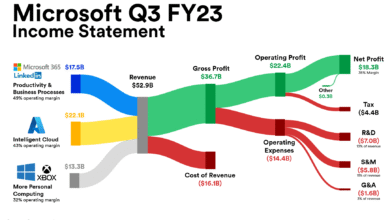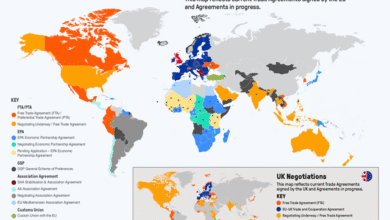Dropshipping Tariffs: Navigating the New Trade Landscape

In the current climate of e-commerce challenges, dropshipping tariffs have emerged as a pressing concern for many online retailers. With the tariff rate on Chinese goods soaring to an unprecedented 145%, entrepreneurs are feeling the financial strain, particularly those in the dropshipping business model. The implications of Trump’s tariffs impact small and medium-sized enterprises significantly, creating hurdles that make international shipping rates more burdensome. As many dropshippers source their products from China for the U.S. market, the complexities of the ongoing U.S.-China trade war only exacerbate these difficulties. Navigating this terrain requires resilience and adaptability, as businesses strive to stay afloat amid rising costs and dwindling consumer confidence.
In today’s rapidly evolving retail landscape, the complexities surrounding import duties have left a profound mark on online selling strategies, specifically within the realm of e-commerce. Tariffs associated with dropshipping from Chinese suppliers are causing ripples across the industry, reshaping how entrepreneurs manage their operations. The adjustments necessitated by escalating import costs and border inspections evoke the broader implications of ongoing trade tensions between the U.S. and China. As digital merchants contend with heightened international shipping expenses and altered market demands, the viability of sourcing products has come under scrutiny. It’s essential for dropshippers to rethink their strategies and diversify their sources to mitigate potential losses in this challenging economic climate.
The Impact of Trump Tariffs on Dropshipping Businesses
The implementation of Trump’s tariffs has dramatically reshaped the landscape for dropshipping businesses. With the current tariff rate on Chinese goods soaring to 145%, dropshippers are now faced with increased costs that threaten their profit margins. This scenario has prompted many entrepreneurs, like Kamil Sattar, to reconsider their pricing strategies and inventory sources. As a consequence, a significant portion of their revenue, particularly from the U.S. market, has begun to dwindle, forcing them to pivot quickly toward other markets.
This shift highlights the fragility of reliance on a single market, such as the U.S., particularly in light of the ongoing U.S.-China trade war. Businesses that primarily source goods from China are feeling the brunt of these tariffs, as products often get stuck at customs, leading to delays and lost sales. Thus, the challenge for dropshippers is not merely about absorbing the increased costs but also navigating the complexities of international shipping regulations and tariffs that affect their ability to compete.
E-commerce Challenges Amid Tariff Increases
As tariffs increase, so do the e-commerce challenges facing dropshipping entrepreneurs. The rising international shipping rates further complicate matters, adding another burden for small and medium-sized enterprises looking to sustain their business model. With a significant percentage of products sourced from China, entrepreneurs must cope with logistical hurdles such as longer shipping times and potential customs fees that can arise unexpectedly during the order fulfillment process.
Additionally, dwindling consumer confidence in the U.S. market due to economic concerns exacerbates these e-commerce challenges. As consumers tighten their wallets, dropshipping businesses are seeing a decline in sales, particularly for products traditionally popular in the U.S. market. This struggle underscores the need for businesses to be agile and consider alternative markets and streamlined operations to counteract the effects of tariff repercussions.
Navigating the Fallout from the Removal of De Minimis Exemption
The removal of the de minimis exemption has exposed dropshipping businesses to additional tariffs, significantly impacting their operations. The previous allowance for goods valued at $800 or less to enter the U.S. without tariffs has now been rescinded for items shipped from China, which will lead to increased costs for dropshippers. This change is set to heavily impact micro-entrepreneurs who often rely on low-value shipments to maintain their inventory and customer engagement.
Industry experts have noted that the accumulation of packages stuck at U.S. ports due to the suspension of this exemption has already created chaos within the supply chain. As seen with companies like Temu and Shein, those that rely heavily on swift and cost-effective shipping methods will find themselves at a disadvantage, as delays and inspections become the new normal. The consequences of these changes underline the importance of adapting to new regulations in order to survive and potentially thrive.
Exploring New Markets: A Lifeline for Dropshipping
In light of current market pressures, diversifying beyond the U.S. and China has become a critical strategy for dropshipping businesses. Entrepreneurs like Sattar have recognized the significance of expanding their market reach to alleviate some of the pressures caused by tariffs. Shifting focus to emerging markets in Europe or even Latin America can provide new avenues for profit, especially as consumer demand fluctuates.
Adapting to these new markets means understanding local preferences and pricing strategies, which can differ markedly from the U.S. market. Successful dropshippers will need to leverage market research and possibly even local partnerships to navigate these unfamiliar waters effectively. By broadening their customer base, these businesses not only spread risk but may also discover untapped opportunities that yield significant profit.
Shipping Solutions: Overcoming Increased Costs
With increased shipping rates due to tariffs, dropshipping businesses must explore cost-effective logistics solutions to maintain competitiveness. This includes negotiating better rates with shipping carriers, exploring regional warehouses to streamline the fulfillment process, and adopting technology to better forecast shipping times and costs. By proactively managing these shipping challenges, dropshippers can minimize their losses and improve customer satisfaction.
Additionally, businesses might consider alternative suppliers that can offer better shipping deals or are located in trade-friendly regions. By diversifying their supply chain, dropshippers can potentially sidestep some of the tariffs imposed on Chinese goods, allowing them to remain profitable while still meeting consumer demand. Such strategic adjustments will be essential in navigating the turbulent waters of the current e-commerce landscape.
Evaluating the Long-term Viability of Dropshipping
As dropshippers grapple with increasing costs and regulatory challenges, questions are being raised about the long-term viability of this business model. While many have thrived in the past era of e-commerce, the evolving landscape marked by tariffs and supply chain issues challenges the notion that dropshipping is a predominantly low-risk venture. Entrepreneurs must now assess their business models critically and adapt to the new reality of increased operational costs.
Empowering themselves with knowledge and embracing tactical pivots will determine which dropshipping businesses stay afloat amid adversity. Looking beyond the immediate effects of tariffs, the future will demand flexibility and innovation to thrive. By investing in stronger supplier relationships and customer engagement strategies, dropshippers can build resilience that withstands economic fluctuations and unpredictable market conditions.
Adjusting Marketing Strategies for a Changing Environment
In response to the evolving economic climate influenced by tariffs, dropshipping businesses must rethink their marketing strategies. As consumer sentiments shift and purchasing power fluctuates, adapting marketing efforts to resonate with target audiences is crucial. This means focusing on value propositions that highlight quality, affordability, and the unique benefits of products sold.
Moreover, leveraging digital marketing tools effectively can help dropshippers reach new customers while retaining existing ones. By employing social media advertising, influencer partnerships, and content marketing, businesses can foster brand loyalty and potentially offset the revenue loss experienced due to increased tariffs. Adapting to new marketing channels not only creates potential revenue streams but also strengthens relationships with customers who are increasingly discerning in their purchasing decisions.
Collaborative Innovation: A Path Forward for Dropshippers
In the face of rising challenges, collaboration and innovation have emerged as key components for dropshippers looking to thrive despite tariffs and market pressures. By forming partnerships with other businesses, dropshippers can pool resources and expertise to create more efficient supply chains and marketing strategies that are sensitive to current consumer needs and trends.
Such collaborative efforts can also lead to innovative solutions that reduce costs or expand product offerings. Engaging in shared logistics ventures or co-developing products can both enhance operational capabilities and improve profit margins, providing dropshippers with a competitive edge in the market. Ultimately, this spirit of collaboration may pave the way for a more sustainable future for dropshipping enterprises operating under the strain of tariffs.
Consumer Behavior Shifts Amid Tariff Uncertainty
The unpredictable nature of tariff announcements and adjustments has caused significant shifts in consumer behavior, particularly in the dropshipping sector. As consumers become increasingly aware of the economic ramifications of tariffs, their purchasing patterns are likely to change. Price sensitivity may heighten, leading to a preference for products that offer clear value for money without the added burden of tariffs.
Dropshipping businesses must stay attuned to these changing consumer preferences and adjust their offerings accordingly. This could involve sourcing products that are perceived as essential rather than luxury goods, thereby catering to the current sentiment and ensuring continued sales amidst economic uncertainty. Understanding consumer motivations in this environment will be critical to maintaining sales and sustaining growth.
Frequently Asked Questions
How do dropshipping tariffs affect my e-commerce store?
Dropshipping tariffs can significantly impact your e-commerce store by increasing the cost of goods purchased from overseas suppliers, particularly in China. With the U.S. tariff rate on Chinese goods reaching 145%, dropshippers may need to raise their prices to maintain profit margins, which can lead to decreased sales and competitiveness.
What is the impact of Trump’s tariffs on dropshipping?
Trump’s tariffs have created substantial hurdles for dropshipping businesses by imposing high duties on goods imported from China. This raises shipping costs and affects the affordability of products for consumers, ultimately leading to reduced sales and a decline in revenue for many dropshippers.
Are dropshipping businesses still viable amidst rising tariffs and shipping rates?
While dropshipping businesses face challenges from rising tariffs and international shipping rates, they can remain viable by diversifying their supplier base and exploring markets outside the U.S. and China. Those who adapt and strategize effectively may uncover hidden opportunities in alternative markets.
What should dropshippers consider regarding U.S.-China trade war implications?
Dropshippers should be aware that the ongoing U.S.-China trade war can lead to increased tariffs and shipping delays, affecting profitability and inventory management. It’s crucial to stay informed about trade policies and consider sourcing products from countries with lower tariff rates to mitigate risks.
How does the removal of the de minimis exemption impact dropshipping?
The removal of the de minimis exemption means that goods valued at $800 or less will now incur tariffs, making shipping costs more expensive for dropshippers. This could result in higher prices for customers, possibly decreasing demand and creating hurdles for small and micro e-commerce businesses.
What strategies can I use to cope with the challenges of dropshipping tariffs?
To cope with dropshipping tariffs, consider diversifying your suppliers to include those from countries with lower tariffs, adjusting your pricing strategy to reflect increased costs, and expanding your sales focus to international markets outside the U.S. Adaptability and strategic decision-making are key to navigating challenges.
How can dropshippers manage shipping delays due to inspections at U.S. borders?
Dropshippers can manage shipping delays by ensuring compliance with U.S. customs regulations and providing accurate documentation for shipments. Additionally, staying informed about tariffs and inspection processes can help anticipate potential delays and adjust fulfillment strategies accordingly.
Why is consumer confidence important for dropshipping businesses affected by tariffs?
Consumer confidence heavily impacts sales for dropshipping businesses, especially as tariffs increase prices. If consumers feel uncertain about spending due to higher costs or economic instability, it can lead to reduced purchases, further affecting dropshipping revenues and market stability.
| Key Point | Details |
|---|---|
| Current Tariff Rate | 145% on Chinese goods, heavily impacting dropshipping businesses. |
| Impact on Revenue | Many dropshipping businesses have reported a decrease in revenue, with some seeing drops of around 33%. |
| Market Focus Shift | Dropshippers are shifting focus from U.S. to European markets due to decreased consumer sales in the U.S. |
| Removal of De Minimis Exemption | Starting May 2, goods valued at $800 or less will no longer enter the U.S. duty-free, significantly affecting dropshippers. |
| Challenges for Small Businesses | Small dropshipping operations are at risk due to increasing tariffs and market volatility. |
| Future Viability | Dropshippers are encouraged to diversify their markets to survive the changing tariff landscape. |
Summary
Dropshipping tariffs are greatly influencing the current landscape of e-commerce, pushing businesses to adapt rapidly. With the U.S. imposing a high tariff rate of 145% on Chinese goods, many dropshipping businesses are struggling to maintain profitability. The recent changes, especially the elimination of the de minimis exemption, further exacerbate these challenges, limiting profit margins and stalling shipments. Companies are finding it essential to diversify their markets to mitigate losses and seek alternative opportunities in a tightening trade environment.




